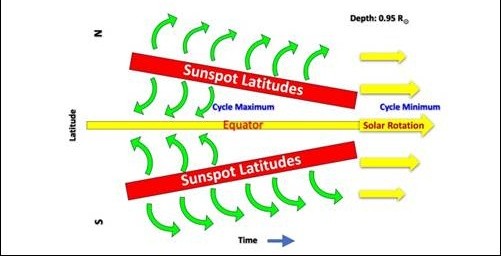PREVIOUS
Near-Surface Shear Layer (NSSL)
July 19 , 2025
16 hrs 0 min
24
0
- An international team of solar physicists, including the scientists from the Indian Institute of Astrophysics (IIA), has mapped dynamic plasma currents in the Sun’s Near-Surface Shear Layer (NSSL).
- It is revealing patterns that correlate with the Sun’s 11-year magnetic activity (sunspot) cycle.
- The plasma currents shift with the Sun’s magnetic heartbeat and could have a far-reaching influence on space weather and Earth.
- They employed helioseismology methodology to observe changes in the movement of solar material.
- It is an advanced technique that tracks sound waves as they travel through the Sun.
- The Near-Surface Shear Layer (NSSL) is a crucial region located just beneath the Sun’s visible surface, extending to a depth of about 35,000 km.
- In the NSSL, the Sun’s angular velocity (a rotation speed) decreases rapidly with the radius, creating a rotational shear that varies with depth, latitude, and solar magnetic activity.
- The study revealed surface plasma flows converge towards sunspot latitudes but reverse midway in the NSSL and flow outward, forming large circulation cells.
- These flows are shaped by the Sun’s rotation and the Coriolis force, which also influences Earth’s hurricanes.

Leave a Reply
Your Comment is awaiting moderation.


